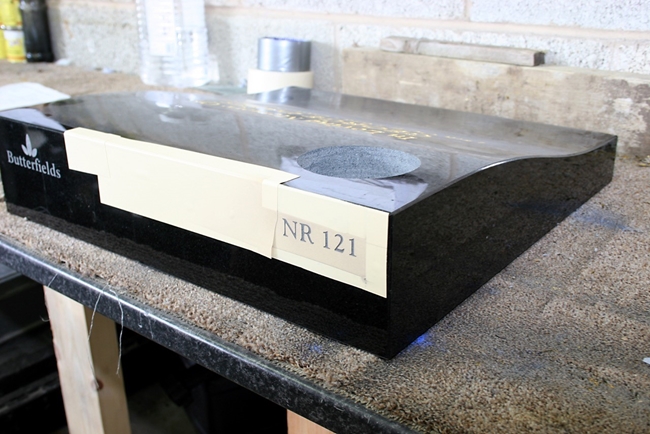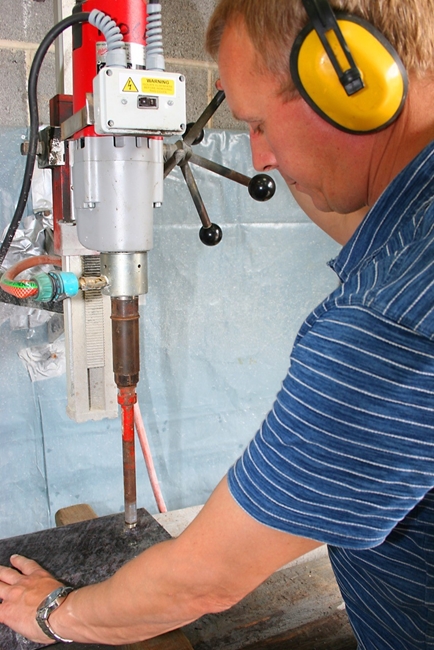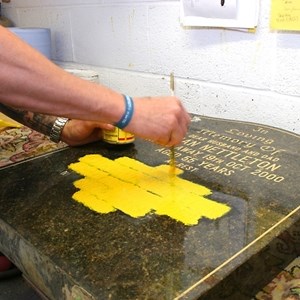How Butterfields Make Memorials
We are very proud to have our very own Memorial Department at our Swinton premises. All our memorial staff are trained, examined and licensed by The National Association of Memorial Masons and we as a company comply with their code of practice. Because of this we are able to offer a wide range of memorial services to our clients such as renovating, cleaning, re-lettering and adding additional inscriptions to existing memorials. Not only are we able to supply and letter a large range of memorials from stock, we are also able to offer bespoke designs to each customers specifications.
You may have wondered just how we go about making our Memorials at Butterfields so we thought we'd share with you our time-tested techniques.
Memorials do vary and so we offer Cremation tablets, Standard Headstones, Full Headstones and Full Headstones with kerb memorials.
We use a sandblast technique to cut letters onto the memorial. This is done by placing a rubber template onto the face of the memorial, the letters are then picked out and then the memorial is placed into a cabinet. Fine grit is then fired at the template/skin until the lettering is formed. The memorial is then given two to three coats of undercoat and then a final gilding coat. This is when 23 ¼ carat gold leaf is applied to the letters when the paint has semi dried and is sufficiently tacky enough, but not too wet. After the paint and gold have dried the excess around the letters is scraped off and the lettering is revealed.
Sandblasting is also used to create designs and pictures on a memorial and can be used at different pressures to create light and shade on the design. Paint colours can also be put into these designs.
Sometimes we have to use other forms of lettering on different materials.
- Lead can be used for marble and this is driven into the cut out letters and then any excess is scraped off.
- Relief lettering is a form of lettering that is used on mainly black granite and is achieved by sandblasting the letters in the opposite way to gilding process. The backing of the stencil/skin is removed and the each individual letter of the inscription is left covered. Grit is then fired at the covered letters and when the stencil is removed the inscription is formed from the polished granite that was covered. This creates a grey background and a sharp black letter. This type of inscription is used on memorials that may be subject to more weathering or laid flat, for example a cremation tablet or plaque.
When memorials are fitted they are usually placed onto a concrete or terrazzo foundation base and fitted with a stainless steel ground anchor to comply with health and safety regulations and The National Association of Memorial Masons.
We are happy to display a wide variety of memorials at our showroom in Rotherham, Swinton and also in our unique memorial garden that is at the rear of the premises. Please come down and take a look, we'd love to see you.
Posted on 03 Oct 16
Back to news






